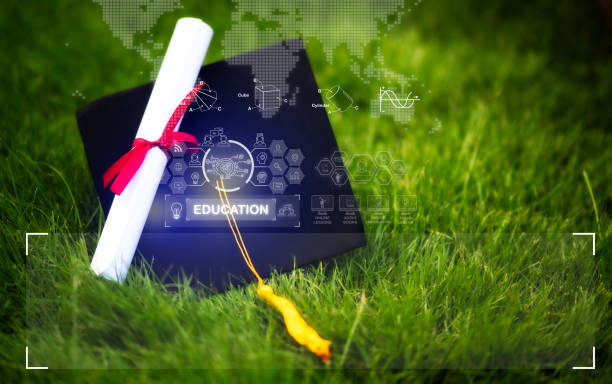Introduction
In recent years, educational technology has rapidly evolved, transforming how students learn and teachers teach. As we step into 2024, staying updated with the latest educational technology trends is essential for educators, students, and institutions alike. This article will explore the most significant educational technology trends shaping the future of learning and teaching.
The Rise of Artificial Intelligence in Education
Personalized Learning Experiences
Artificial Intelligence (AI) is revolutionizing education by offering personalized learning experiences. AI-powered platforms analyze individual student performance and learning styles to tailor educational content and resources. This ensures that each student receives instruction suited to their needs, enhancing engagement and effectiveness.
Intelligent Tutoring Systems
Intelligent tutoring systems (ITS) use AI to provide real-time feedback and assistance. These systems adapt to students’ learning progress, offering additional help and resources when needed. ITS can identify areas where students struggle and provide targeted interventions, making learning more efficient and supportive.
The Expansion of Virtual and Augmented Reality
Immersive Learning Environments
Virtual Reality (VR) and Augmented Reality (AR) are creating immersive learning environments that transport students to different places and times. Whether exploring ancient civilizations or conducting virtual science experiments, VR and AR enhance learning by providing hands-on, interactive experiences that traditional methods cannot match.
Enhanced Collaboration and Engagement
VR and AR also foster collaboration and engagement among students. Through virtual classrooms and interactive simulations, students can work together on projects, conduct experiments, and explore concepts in a more engaging way. This not only makes learning more enjoyable but also improves teamwork and communication skills.
Gamification of Education
Motivation through Game Elements
Gamification is the integration of game elements into educational contexts to increase student motivation and engagement. By incorporating points, badges, and leaderboards, educational platforms can make learning more fun and rewarding. Gamification encourages students to participate actively and persist in their studies.
Educational Games and Apps
Educational games and apps are becoming increasingly popular, offering interactive and entertaining ways for students to learn. These tools cover various subjects and skills, from math and science to language and critical thinking. Gamified learning experiences can help students grasp complex concepts more easily and retain information longer.
Cloud-Based Learning Platforms
Flexibility and Accessibility
Cloud-based learning platforms are transforming education by offering flexible and accessible learning options. Students and teachers can access educational materials, collaborate on projects, and participate in classes from anywhere with an internet connection. This flexibility supports diverse learning needs and accommodates different schedules.
Collaboration and Resource Sharing
Cloud-based platforms also enhance collaboration and resource sharing. Teachers can easily share educational resources, assignments, and feedback with students. Students can work on group projects and access a wide range of materials from various sources. This collaborative approach fosters a more dynamic and interactive learning environment.
Data-Driven Insights for Improved Learning
Analyzing Student Performance
Data analytics tools are helping educators gain insights into student performance and learning patterns. By analyzing data on student progress, engagement, and behavior, teachers can identify trends and areas for improvement. This data-driven approach allows for more informed decision-making and targeted interventions.
Enhancing Educational Outcomes
Data-driven insights enable educators to implement evidence-based practices and strategies to enhance educational outcomes. By leveraging analytics, teachers can adjust their teaching methods, personalize instruction, and provide additional support where needed. This leads to a more effective and responsive learning environment.
The Integration of Blockchain in Education
Secure and Transparent Records
Blockchain technology is making its way into education by providing secure and transparent records of academic achievements. Blockchain can store credentials, transcripts, and other educational records in an immutable and tamper-proof manner. This ensures the integrity and authenticity of academic records, simplifying verification processes.
Enhancing Credentialing and Accreditation
Blockchain also has the potential to revolutionize credentialing and accreditation by creating a decentralized system for verifying qualifications. This can streamline the process of recognizing and validating educational achievements, making it easier for institutions and employers to assess candidates’ credentials.
Conclusion
As educational technology continues to advance, staying informed about the latest trends is crucial for educators, students, and institutions. From AI and VR to gamification and blockchain, these technologies are shaping the future of education by enhancing learning experiences, increasing engagement, and improving outcomes. Embracing these trends will help create a more effective, flexible, and innovative educational environment.
FAQs
What are the main benefits of AI in education?
AI in education provides personalized learning experiences, real-time feedback, and intelligent tutoring systems that adapt to individual student needs, enhancing engagement and effectiveness.
How does VR enhance learning?
Virtual Reality (VR) offers immersive learning environments that transport students to different places and times, providing interactive and hands-on experiences that traditional methods cannot match.
What is gamification in education?
Gamification involves integrating game elements like points, badges, and leaderboards into educational contexts to increase student motivation, engagement, and participation in learning activities.
How do cloud-based platforms benefit education?
Cloud-based platforms offer flexibility and accessibility, allowing students and teachers to access materials and collaborate from anywhere with an internet connection, supporting diverse learning needs and schedules.
What role does blockchain play in education?
Blockchain technology provides secure and transparent records of academic achievements, enhancing credentialing and accreditation processes by creating immutable and tamper-proof records of educational credentials.
